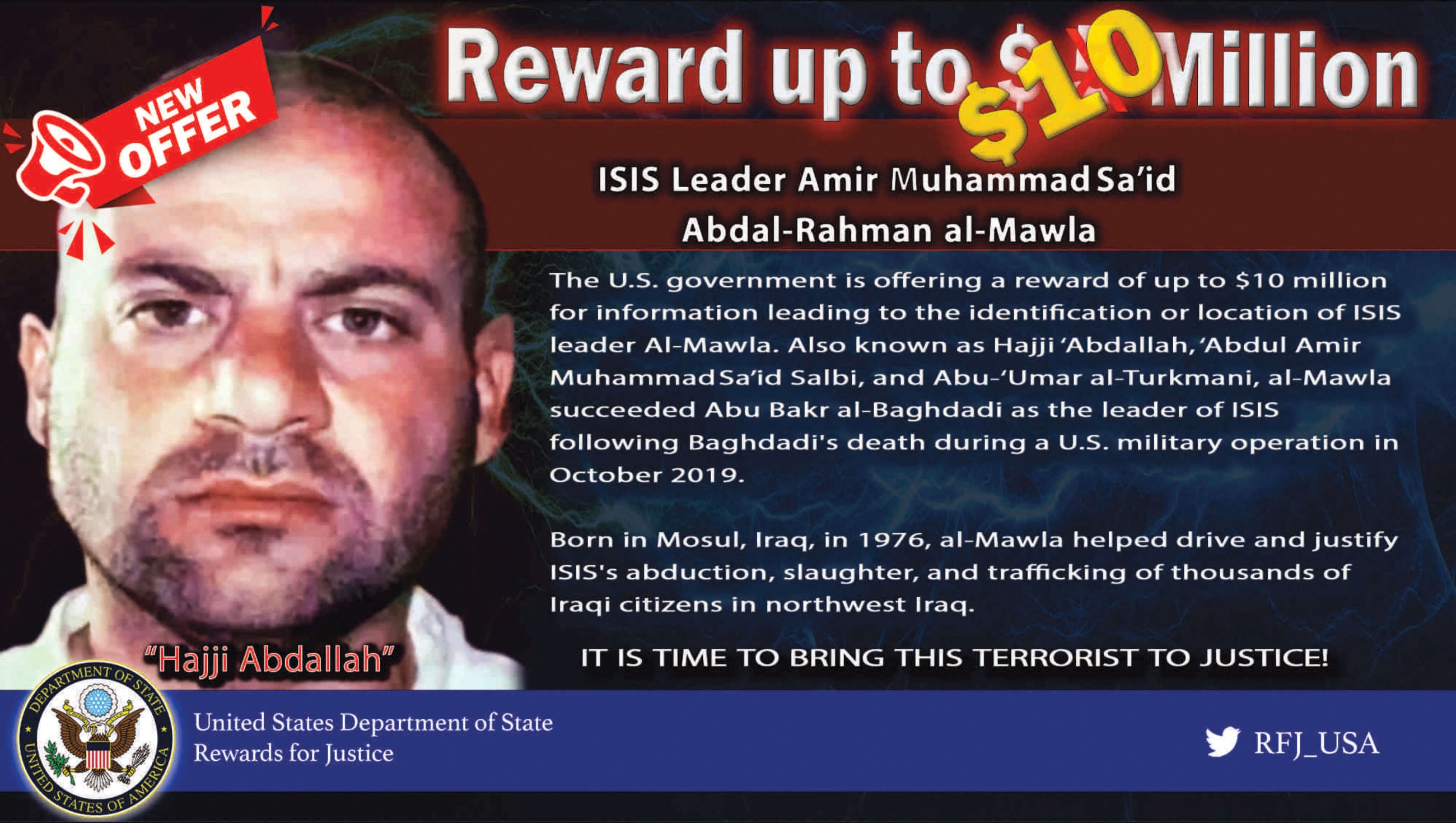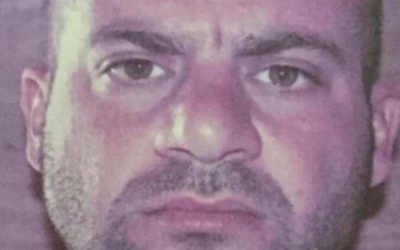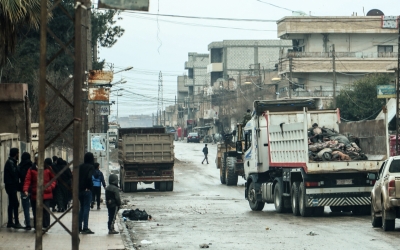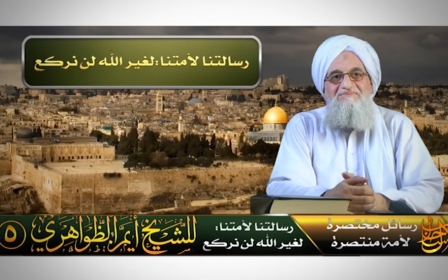What we know about Islamic State leader Abu Ibrahim al-Hashimi al-Qurayshi

Abu Ibrahim al-Hashimi al-Qurayshi, leader of the Islamic State group (IS), died on Wednesday night without the world really knowing who he was.
According to US President Joe Biden, Qurayshi, whose real name is Amir Muhammad Said Abdal-Rahman al-Mawla, detonated a bomb as US soldiers descended on the house where he was staying in Atmeh, in northwest Idlib, killing himself and members of his own family, including women and children.
New MEE newsletter: Jerusalem Dispatch
Sign up to get the latest insights and analysis on Israel-Palestine, alongside Turkey Unpacked and other MEE newsletters
One of the world's most wanted men, the US government had offered a $10m reward for information leading to him.
IS gives little away about its leaders. Its previous head, Abu Bakr al-Baghdadi, only made three appearances in IS media during his nine years in charge.
But in the year and a half that Qurayshi led the group, some details nonetheless emerged.
From Saddam Hussein’s army, to US informant, to the head of a floundering IS, here’s what we know about the secretive Qurayshi.
The man from Tal Afar
Mawla, also known also as Abdullah Qardash or Hajj Abdullah, was born in 1976 in northern Iraq's Tal Afar, a majority-Turkmen town.
His father was a muezzin who had two wives, according to a BBC Arabic investigation published last year.
After studying Quranic studies and Islamic education at the University of Mosul, Mawla served for 18 months as an officer in Saddam Hussein’s army in outer Baghdad.
Around the time of the US invasion of Iraq in 2003, Mawla began operating as a militant.
He then moved to Mosul, where he got a masters in Islamic studies and began to rise up the ranks of al-Qaeda, becoming a religious judge for the group.
In 2008, US soldiers raided Mawla’s Mosul home and jailed him in Camp Bucca, a facility in Umm Qasr, southern Iraq, where Abu Bakr al-Baghdadi was also incarcerated. Several officials have since referred to it as a "Jihadi university" because of the training and indoctrination fomented there.
For months, Mawla was repeatedly questioned, before being released in 2009.
Baghdadi’s lieutenant
As soon as he was released, Mawla joined up with Baghdadi, who was head of the Islamic State in Iraq, al-Qaeda's Iraqi affiliate. He was named a religious leader in Iraq’s northern Nineveh governorate.
Like Baghdadi, Mawla was reportedly singled out and groomed for leadership in the shadows, and deliberately kept away from any combat.
He was involved in the running of the Islamic State “caliphate” before his predecessor was killed, training judges and religious leaders and holding various positions similar to those of ministers.
He reportedly argued strongly in favour of the enslavement of Yazidi women when IS took Sinjar, in northern Iraq, in 2014.
As top IS leaders were taken out by the coalition and the group began losing territory, Mawla rose to become Baghdadi’s right-hand man, the BBC found, and was responsible for the organisation’s finances as it restructured.
IS lost its last patch of territory after a months-long, bloody battle for Baghouz, a town in Syria, in March 2019.
Five months later, Baghdadi killed himself and three children by detonating an explosive belt after being pursued by military dogs into a tunnel, as American special forces raided his compound in the village of Barisha, near the Turkish border.
Mawla was named as Baghdadi’s successor five days after his death in October 2019.
His appointment was not universally popular, however. Some IS supporters criticised his relatively low profile, calling him a “secluded paper caliph” and “unknown nobody”.
Others questioned his religious credentials and whether his family were Arabs or Turkmen.
His “flattering” nom de guerre, al-Qurayshi, places him as one of the descendants of the Quraish, a leading tribe in Mecca which the Prophet Muhammad was a member of.
The Islamic State that Mawla took charge of was a shadow of the organisation at its peak in 2015.
Thousands of its officers and soldiers had been killed and others were stewing in overcrowded prisons in Syria and Iraq.
Some fighters defected, but thousands remained loyal to the ideology and formed sleeper cells, some of which mobilised recently to attempt an audacious prison break in Syria's Hasakah.
'Canary caliph'
His leadership was again undermined in September 2020, when notes from three of the 66 interrogations at Camp Bucca in 2008 were released by the Combating Terrorism Centre at West Point.
Little had been known about his time in US detention, but the files suggested Mawla gave the names of 68 al-Qaeda fighters and the structure of the organisation in Mosul.
The interrogation notes alleged he identified leading figures behind assassinations, kidnappings and the production of improvised explosive devices used to kill coalition forces.
One of the people named by Mawla was Abu Jasim Abu Qaswarah, thought to be the second-in-command of al-Qaeda in Iraq at the time. He was killed by US forces eight months after Mawla identified him as a member of the group.
Haroro Ingram, a senior research fellow at George Washington University's programme on extremism, said at the time that the documents would "really shake trust" in the leadership of the IS group.
"What the documents potentially reveal is that the Islamic State has a rat problem. And it's at the top. You’ve essentially got the canary caliph sitting there," he said during a webinar.
Gina Ligon, an organisational psychologist, said the documents showed "a lot of punitive language", suggesting Mawla held grudges easily.
He likely viewed people as "expendable resources that he could discard [and no more than] cogs in a greater machine", she said.
"They were key to his release, so he gave them up," Ligon said. "This is a distant leader who will callously give people up when they are no longer of use to him."
IS resurgence
IS may still be without territory, but last week’s prison break was yet another sign that the group still has weapons and loyal combatants.
In the nearby al-Hol camp, where Kurdish authorities hold women suspected of being IS members and their children, the group has assassinated detainees, beheading several people.
Eleven Iraqi soldiers were killed in an overnight attack by IS fighters against their base in January in Iraq's eastern province of Diyala.
The State Department’s envoy to the US-led coalition battling the group warned in July that deteriorating economic conditions in Iraq and Syria are paving the way for IS to reconstitute.
Middle East Eye delivers independent and unrivalled coverage and analysis of the Middle East, North Africa and beyond. To learn more about republishing this content and the associated fees, please fill out this form. More about MEE can be found here.







